Best Time to Visit Everest Base Camp Trek
Everest Base camp trekking in Nepal is an incredible and extremely rewarding challenge that pushes both mind and body out of their comfort zones.
Everest Base camp trekking in Nepal is an incredible and extremely rewarding challenge that pushes both mind and body out of their comfort zones.
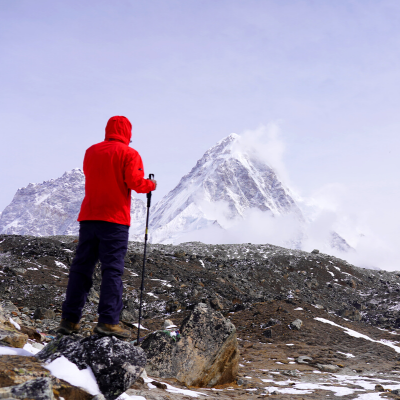
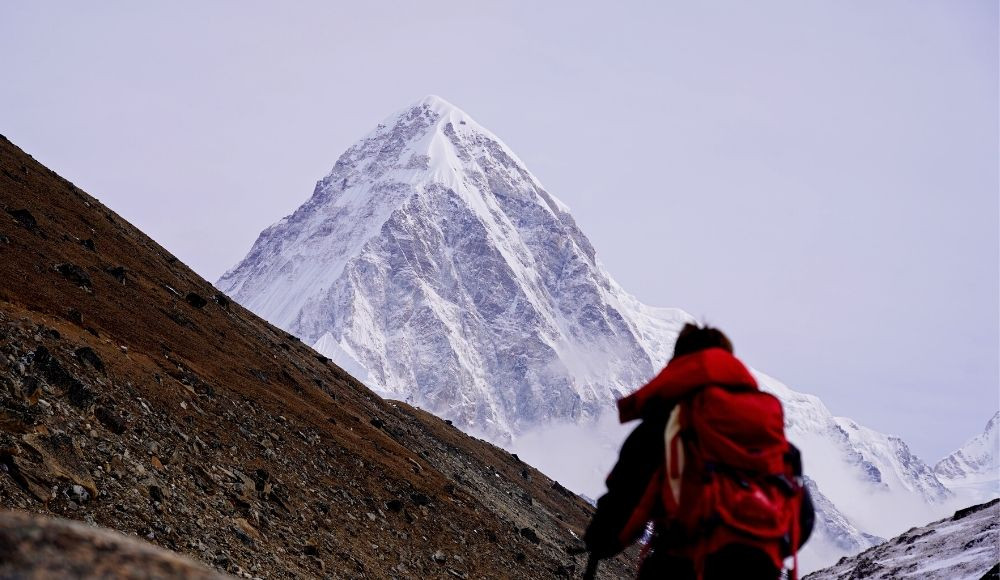
Everest Base Camp Trek (EBC) is a world-renowned adventure that takes intrepid travelers to the base of the highest peak on Earth, Mount Everest. Located in the heart of the majestic Himalayas in Nepal, this exhilarating trek offers a once-in-a-lifetime experience, combining jaw-dropping landscapes, rich cultural immersion, and unparalleled physical challenges.
The classic route typically starts from the picturesque mountain town of Lukla, taking trekkers through lush rhododendron forests, traditional Sherpa villages, and rugged mountain terrain, culminating at the base camp situated at an altitude of 5,364 meters (17,598 feet). The trek usually takes 12-14 days to complete, including acclimatization days to help trekkers adapt to the high altitude.
Apart from the sense of achievement of reaching the foot of the world's tallest peak, trekkers can witness breathtaking vistas of the Himalayan range, explore the unique culture and traditions of the local Sherpa people, and learn about the history and legends of the mountains. Timing your visit to EBC is crucial to ensure an enjoyable and safe experience, as the region's weather and trail conditions can significantly impact your trek.
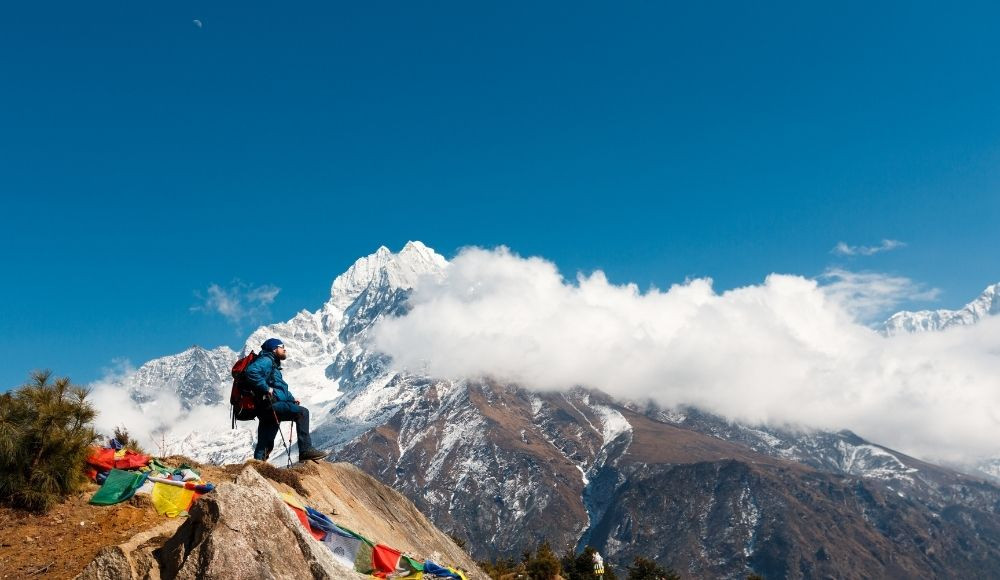
The importance of timing your visit to Everest Base Camp Trek cannot be overstated, as the region's weather and trail conditions play a vital role in determining the success and enjoyment of your adventure. Choosing the right time to embark on this trek ensures optimal weather conditions, safer trails, clear views, and a more pleasant overall experience.
This comprehensive blog will guide you through the factors to consider when planning your Everest Base Camp Trek, such as weather, trail conditions, and cultural events. We will provide a month-by-month breakdown of the trekking conditions, discuss the recommended seasons, explore off-peak options, and offer tips on planning and preparation. By the end of this blog, you will have the necessary information to make an informed decision on the best time to visit Everest Base Camp Trek, setting the stage for an unforgettable journey.
When choosing the best time for your Everest Base Camp Trek, it's crucial to consider various factors that can significantly impact your overall experience. Here are the key factors to keep in mind while planning your adventure:
Temperature fluctuations: The temperature in the Everest region varies greatly depending on the altitude and time of year. Generally, daytime temperatures are mild and comfortable, while nighttime temperatures can plummet below freezing, especially at higher altitudes. Consider the temperature fluctuations when planning your trek and pack the appropriate clothing to stay comfortable in all conditions.
Precipitation levels: The amount of rainfall or snowfall in the region is another critical factor to consider when choosing the best time for your trek. Heavy precipitation can lead to slippery trails, landslides, and limited visibility, making trekking more challenging and less enjoyable.
Accessibility: The condition of the trails can greatly affect your trekking experience. In the dry season, trails are more accessible and safer, while during the monsoon, trails can be muddy, slippery, and prone to landslides. Snow and ice during winter months can also make the trek more challenging and may require additional gear.
Crowdedness: The number of trekkers on the trail varies throughout the year, with peak seasons being more crowded than off-peak months. If you prefer a quieter trekking experience, consider visiting during off-peak times. However, be prepared for potentially more challenging conditions.
Trekking during festivals and cultural events can add a unique and memorable aspect to your Everest Base Camp Trek. The Sherpa people celebrate several festivals throughout the year, including Mani Rimdu, Dumji, and Tiji. These events offer a fascinating insight into local customs and traditions, making your trek even more enriching. Be aware that trekking during these events may also mean busier trails and limited accommodation options, so plan accordingly.
A month-by-month breakdown of the Everest Base Camp Trek will help you understand the conditions and choose the best time for your adventure:
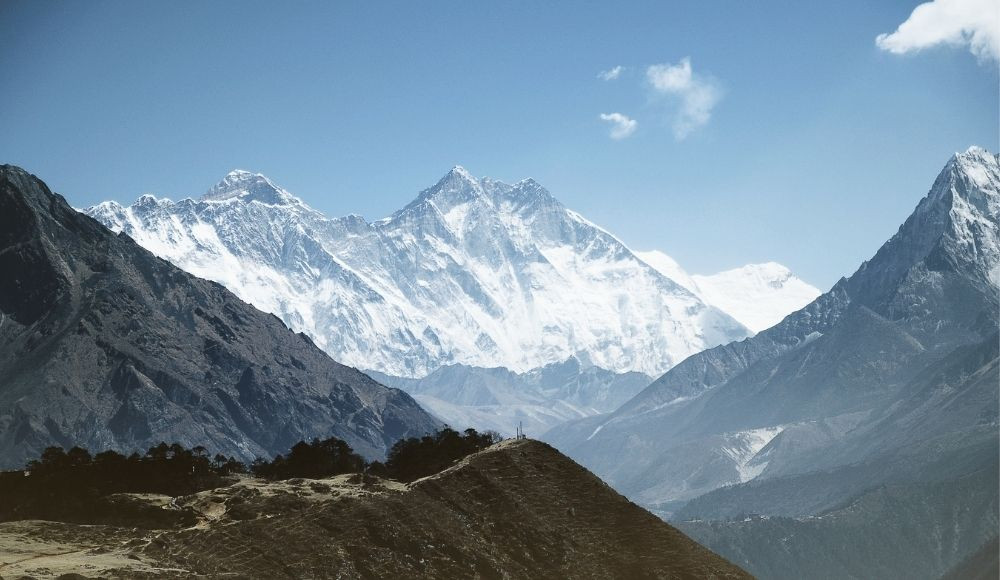
Weather: Cold, with daytime temperatures around 4°C (39°F) and nighttime temperatures dropping to -17°C (1°F) at higher altitudes
Precipitation: Low; occasional snowfall
Trail conditions: Accessible but icy; fewer trekkers
Highlights: Clear views, quieter trails
Weather: Cold, with slightly warmer temperatures than January
Precipitation: Low; occasional snowfall
Trail conditions: Accessible but icy; fewer trekkers
Highlights: Clear views, quieter trails
Weather: Moderate, with daytime temperatures averaging 7°C (45°F) and nighttime temperatures dropping to -12°C (10°F) at higher altitudes
Precipitation: Low
Trail conditions: Accessible; beginning of the spring trekking season
Highlights: Clear views, rhododendron blooms, increasing trekkers
Weather: Moderate, with daytime temperatures averaging 10°C (50°F) and nighttime temperatures around -5°C (23°F) at higher altitudes
Precipitation: Low
Trail conditions: Accessible; popular trekking season
Highlights: Clear views, rhododendron blooms, more trekkers
Weather: Warm, with daytime temperatures averaging 15°C (59°F) and nighttime temperatures around 0°C (32°F) at higher altitudes
Precipitation: Low to moderate
Trail conditions: Accessible; popular trekking season
Highlights: Clear views, warmer weather, more trekkers
Weather: Warm, with daytime temperatures averaging 16°C (61°F) and nighttime temperatures around 2°C (36°F) at higher altitudes
Precipitation: High; beginning of the monsoon season
Trail conditions: Muddy, slippery, and prone to landslides
Highlights: Quieter trails, lush landscapes, limited visibility
Weather: Warm, with similar temperatures to June
Precipitation: High; monsoon season
Trail conditions: Muddy, slippery, and prone to landslides
Highlights: Quieter trails, lush landscapes, limited visibility
Weather: Warm, with similar temperatures to June and July
Precipitation: High; monsoon season
Trail conditions: Muddy, slippery, and prone to landslides
Highlights: Quieter trails, lush landscapes, limited visibility
Weather: Moderate, with daytime temperatures averaging 12°C (54°F) and nighttime temperatures around -4°C (25°F) at higher altitudes
Precipitation: Decreasing; end of the monsoon season
Trail conditions: Becoming more accessible; beginning of the autumn trekking season
Highlights: Clear views, post-monsoon freshness, increasing trekkers
Weather: Moderate, with daytime temperatures averaging 10°C (50°F) and nighttime temperatures around -7°C (19°F) at higher altitudes
Precipitation: Low
Trail conditions: Accessible; popular trekking season
Highlights: Clear views, stable weather, more trekkers
Weather: Cool, with daytime temperatures averaging 6°C (43°F) and nighttime temperatures dropping to -12°C (10°F) at higher altitudes
Precipitation: Low
Trail conditions: Accessible; popular trekking season
Highlights: Clear views, stable weather, more trekkers
Weather: Cold, with daytime temperatures around 2°C (36°F) and nighttime temperatures dropping to -15°C (5°F) at higher altitudes
Precipitation: Low; occasional snowfall
Trail conditions: Accessible but icy; fewer trekkers
Highlights: Clear views, quieter trails, festive atmosphere in villages
Spring and autumn seasons are the peak tourist season at Everest Base camp. With ideal weather and the overall condition of the trail, hundreds of people trek to EBC during these two seasons.
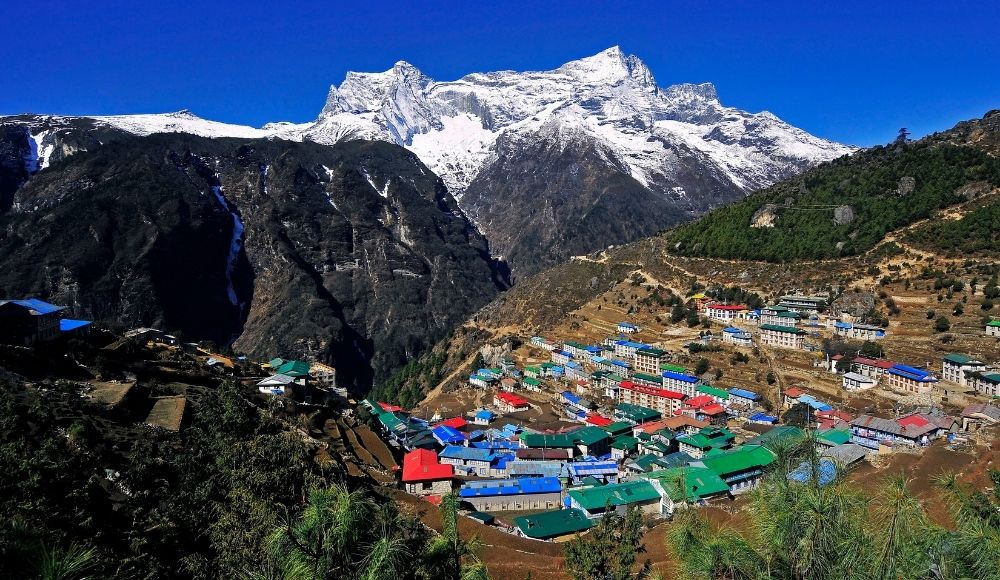
Spring (March to May) is one of the most popular seasons for trekking to Everest Base Camp. Here's what you can expect during this time:
Weather conditions: Spring offers moderate and comfortable weather conditions for trekking. Daytime temperatures range from 7°C (45°F) in March to 15°C (59°F) in May, while nighttime temperatures can drop to -12°C (10°F) in March and hover around 0°C (32°F) in May at higher altitudes. The weather is generally stable, with a low chance of precipitation, making it ideal for trekking.
Rhododendron blooms: Spring is the season when the rhododendron forests come alive with vibrant colors. The lower sections of the trail are adorned with beautiful pink, red, and white rhododendron blooms, creating a stunning visual spectacle.
Crowd levels: Spring is a popular trekking season, which means you can expect more trekkers on the trail compared to off-peak months. While this can make the trail feel busier, it also offers opportunities to meet fellow trekkers and share experiences.
Tips for trekking during spring:
Book accommodations and flights in advance, as they tend to fill up quickly during peak seasons.
Be prepared for a mix of temperatures, as it can be warm during the day and cold at night. Dress in layers to easily adjust to changing conditions.
Start your trek early in the morning to maximize daylight hours and avoid potential afternoon cloud cover.
Keep an eye on weather updates and be prepared to adjust your plans if necessary. Even during the stable spring season, weather in the mountains can be unpredictable.
Autumn (September to November) is another popular season for trekking to Everest Base Camp, providing excellent conditions for a successful and enjoyable journey:
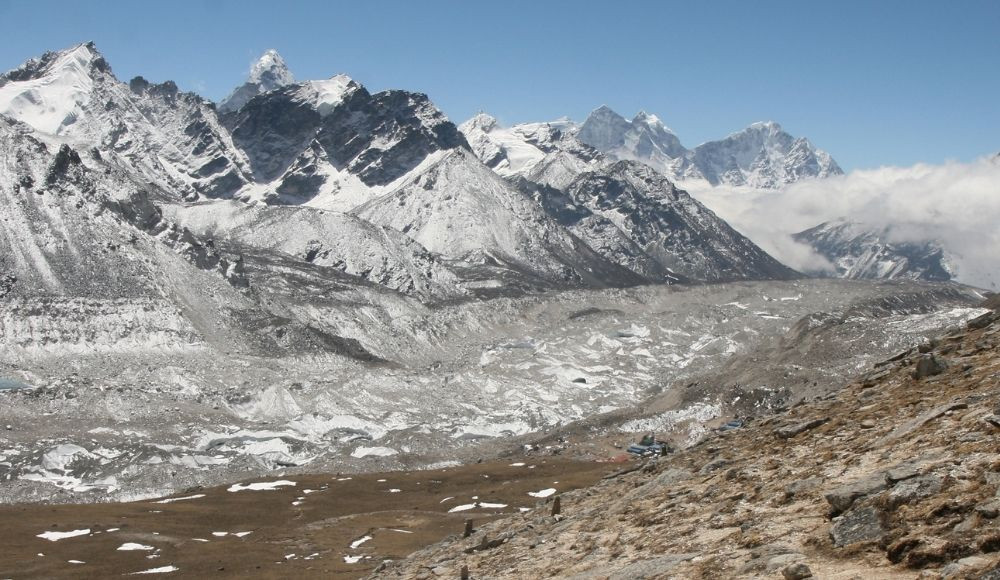
Weather conditions: Autumn is characterized by moderate and stable weather, with temperatures ranging from 12°C (54°F) in September to 6°C (43°F) in November during the day, and dropping to -4°C (25°F) in September and -12°C (10°F) in November at higher altitudes during the night. Precipitation levels are low, ensuring clear skies and impressive mountain views.
Post-monsoon freshness: The monsoon season brings abundant rainfall, which leaves the landscape lush and rejuvenated. As the monsoon recedes, the air is fresh, and the surroundings are vibrant, providing an enchanting backdrop for your trek.
Crowd levels: Autumn is the peak trekking season in the Everest region, attracting many trekkers from around the world. The trails can be crowded during this time, which might affect the availability of accommodations. However, the lively atmosphere also offers opportunities to connect with fellow adventurers.
Tips for trekking during autumn:
Book your flights and accommodations well in advance to secure your preferred choices, as they tend to fill up quickly during the peak season.
Dress in layers to adapt to fluctuating temperatures throughout the day and at different altitudes.
Begin your trek early in the morning to make the most of daylight hours and enjoy clear mountain views before potential afternoon cloud cover.
Stay updated on weather forecasts and be prepared to adapt your plans if needed. Despite the typically stable weather during autumn, mountain conditions can still be unpredictable.
Spring and Autumn provide ideal conditions for any mountain treks. But for those daring and looking for a unique experience in the Himalayas, winter and monsoon seasons provide ample opportunities to do so. Here's what you will experience in those seasons:
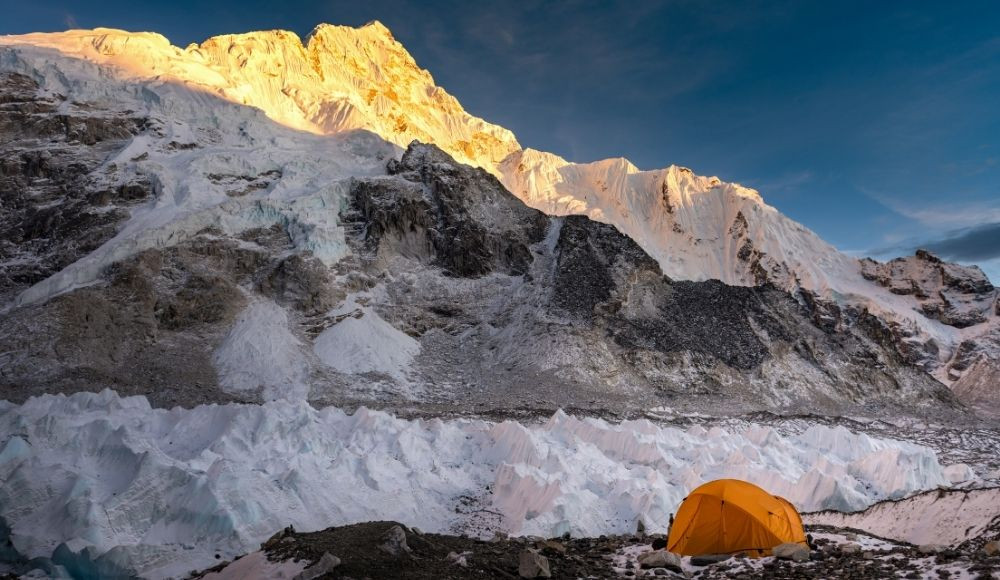
Winter (December to February) is considered the off-peak season for Everest Base Camp Trek, with colder temperatures and challenging conditions. However, it offers a unique experience for those willing to brave the elements:
Weather conditions: Winter is characterized by cold temperatures, with daytime averages around 2°C (36°F) in December and 4°C (39°F) in January/February. Nighttime temperatures can drop to -15°C (5°F) in December and -17°C (1°F) in January/February at higher altitudes. Clear skies are common, providing stunning views of the mountains.
Snow and ice on the trails: During winter, snowfall can be expected, particularly at higher elevations. This can make the trails icy and more challenging to navigate. Proper trekking gear, such as crampons and trekking poles, may be necessary to ensure safety.
Crowd levels: Winter sees fewer trekkers on the trails, offering a more serene and peaceful experience. This also means that accommodations are more readily available and less crowded.
Tips for trekking during winter:
Invest in high-quality cold-weather clothing and gear to stay warm and comfortable throughout the trek.
Allow for extra acclimatization days in your itinerary, as the cold weather can make altitude adjustment more challenging.
Be prepared to adjust your plans if snowfall or other winter conditions make certain sections of the trail inaccessible or unsafe.
Keep a close eye on weather forecasts and consult with local guides or trekking agencies for up-to-date information on trail conditions.
Consider hiring an experienced guide to help navigate the more challenging winter conditions and ensure a safe and enjoyable trek.
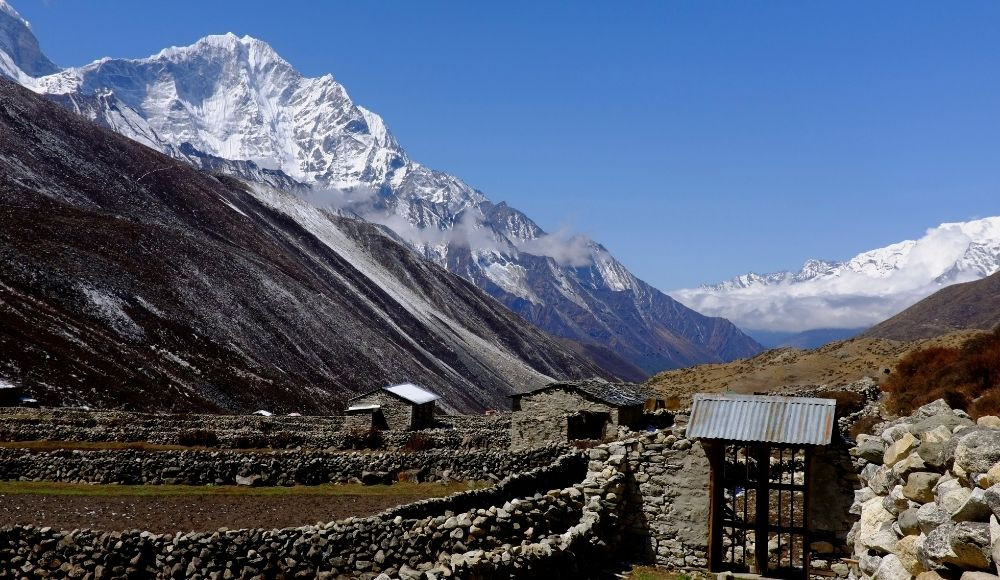
Monsoon (June to August) is considered the least favorable season for the Everest Base Camp Trek due to heavy rainfall and challenging conditions. However, for those willing to take on the challenges, the monsoon season can offer a unique and less-crowded experience:
Weather conditions: The monsoon season is characterized by warm temperatures, with daytime averages around 16°C (61°F) in June and similar temperatures in July and August. Heavy rainfall is common during this period, often accompanied by thick cloud cover and limited visibility.
Landslides and muddy trails: The heavy rainfall during the monsoon season can result in muddy and slippery trails, making trekking more difficult. Landslides and rockfalls may also occur, particularly in lower-altitude regions, posing potential risks to trekkers.
Crowd levels: Monsoon season sees significantly fewer trekkers on the trails, providing a quieter and more secluded experience. Accommodations are generally more available and less crowded during this time.
Tips for trekking during monsoon:
Invest in high-quality waterproof gear, including rain jackets, pants, and trekking shoes, to stay dry and comfortable during the trek.
Be prepared for delays or route changes due to landslides, rockfalls, or other monsoon-related hazards.
Start your trek early in the day, as rainfall is typically heavier in the afternoon and evening.
Keep a close eye on weather forecasts and consult with local guides or trekking agencies for up-to-date information on trail conditions.
Consider hiring an experienced guide to help navigate the challenging monsoon conditions and ensure a safe and enjoyable trek.
Carry insect repellent, as the wet conditions can result in increased insect activity, particularly leeches, in lower-altitude regions.
Now that you have your time of visit picked, let's go through the brief preparation you will need to complete before starting on this journey.
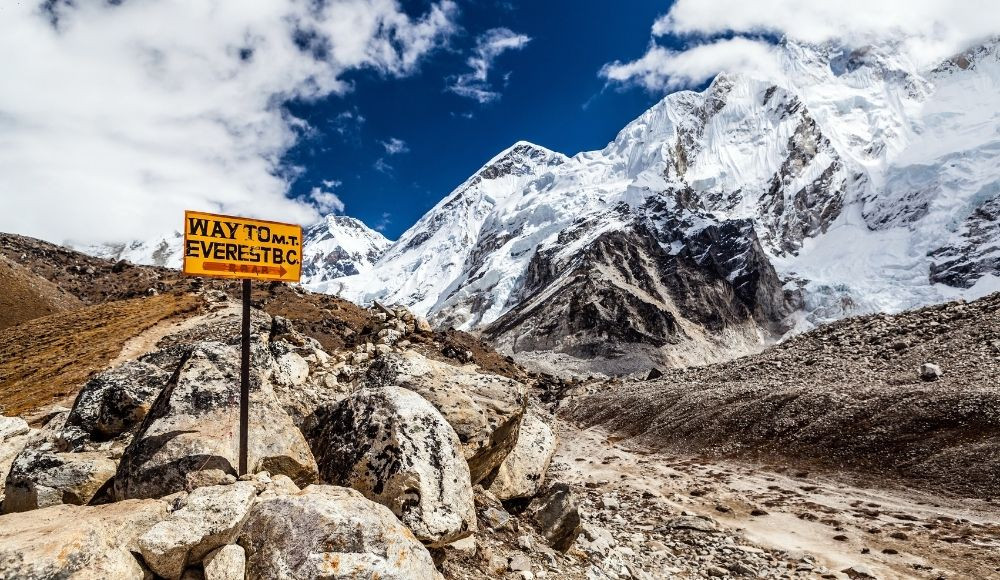
Selecting a reliable and experienced trekking agency is a crucial part of planning your Everest Base Camp Trek. A good trekking agency will help you organize the trek, provide knowledgeable guides, and ensure a safe and enjoyable experience. Here are some tips for choosing the right trekking agency:
Research: Start by researching various trekking agencies online. Read reviews and testimonials from previous trekkers to get an idea of their experiences and the quality of service provided.
Experience and expertise: Look for agencies with a proven track record and experience in organizing treks to Everest Base Camp. Choose an agency with well-trained and experienced guides who are familiar with the region, local customs, and potential hazards.
Safety standards: Prioritize agencies with a strong focus on safety, including proper acclimatization schedules, first aid training for guides, and emergency evacuation plans. Check if the agency has a good safety record and ask about their protocols for handling altitude sickness and other potential issues during the trek.
Services and inclusions: Compare the services and inclusions provided by different trekking agencies. These may include accommodations, meals, transportation, permits, and equipment rental. Ensure that the package you choose meets your needs and preferences.
Responsiveness and communication: A good trekking agency should be responsive to your inquiries and provide clear and detailed information about the trek. Assess the quality of their communication and customer service during the planning stages.
Responsible and sustainable practices: Consider agencies that follow responsible and sustainable tourism practices, such as supporting local communities, minimizing environmental impact, and ensuring fair wages and working conditions for their staff.
Budget and value for money: Compare the prices of different trekking agencies and choose one that offers the best value for money while meeting your requirements. Remember that the cheapest option may not always be the best choice, as it could compromise safety, service quality, or ethical practices.
Personal recommendations: If you know someone who has trekked to Everest Base Camp before, ask for their recommendations and experiences with trekking agencies. Personal referrals can often provide valuable insights and help you make an informed decision.
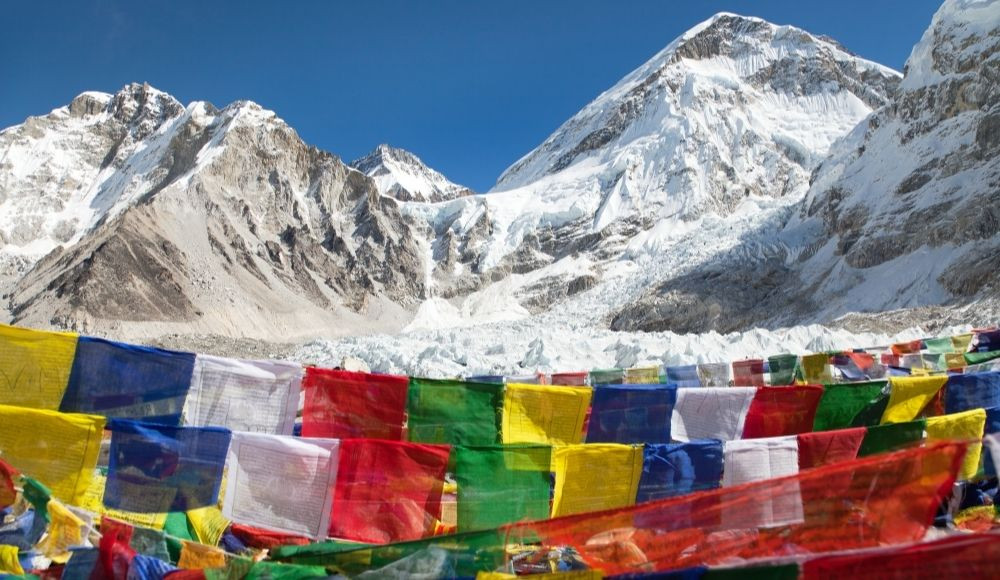
Preparing for the Everest Base Camp Trek involves ensuring that you are physically fit and understand the importance of proper acclimatization. Here are some guidelines to help you prepare:
Physical fitness:
Acclimatization:
Packing essentials for the Everest Base Camp Trek should include appropriate clothing, trekking gear, toiletries, personal items, and a medical kit. Here's a breakdown of each category:
Clothing:
a. Base layers: Moisture-wicking and quick-drying synthetic or merino wool base layers (tops and bottoms) for both cold and warm conditions.
b. Mid-layers: Insulating fleece or down jackets for added warmth during colder days and at higher altitudes.
c. Outer layers: Waterproof and breathable shell jackets and pants to protect against wind and rain.
d. Trekking pants: Lightweight, quick-drying, and breathable trekking pants for comfortable hiking.
e. Underwear: Moisture-wicking and quick-drying synthetic or merino wool underwear.
f. Socks: High-quality, moisture-wicking, and cushioned trekking socks, as well as liner socks to prevent blisters.
g. Gloves: Insulated, waterproof gloves for cold weather and lighter gloves for sun protection.
h. Hats: A warm hat or beanie for cold conditions and a wide-brimmed hat or cap for sun protection.
i. Neck gaiter or buff: Useful for keeping your neck warm and protecting your face from wind and dust.
Trekking gear:
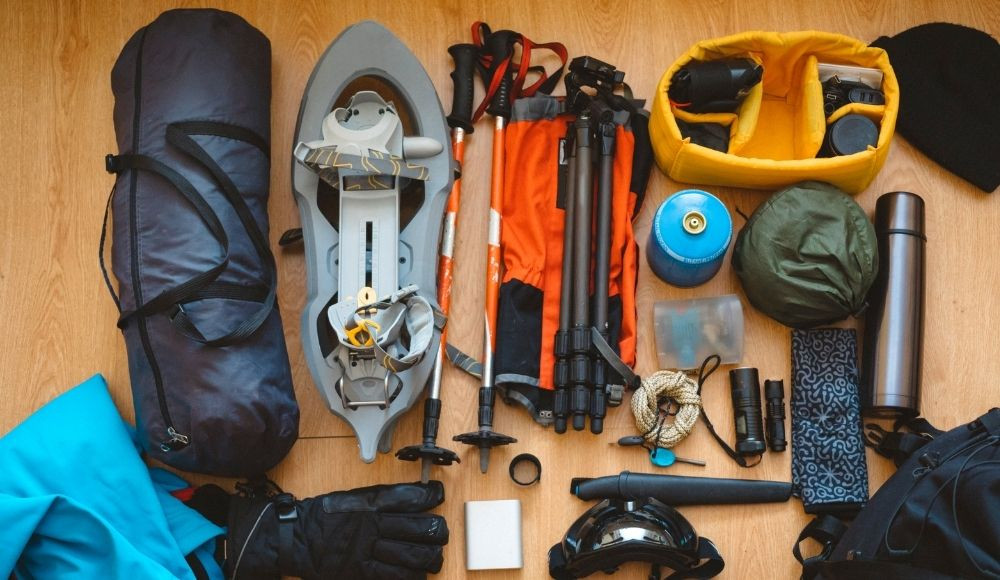
a. Backpack: A comfortable 40-60 liter backpack with adjustable straps, hip belt, and rain cover.
b. Trekking poles: Adjustable, lightweight trekking poles for added stability and support.
c. Footwear: High-quality, waterproof, and well-fitting trekking boots, as well as sandals or comfortable shoes for evenings in the teahouses.
d. Sunglasses: UV-protective sunglasses with side shields or wraparound style for protection against glare.
e. Headlamp: A reliable headlamp with extra batteries for early morning starts or nighttime use in teahouses.
f. Water bottles or hydration system: Carry at least 2-3 liters of water capacity to stay hydrated during the trek.
Toiletries and personal items:
a. Sunscreen: High SPF sunscreen for protection against strong UV rays.
b. Lip balm: Lip balm with SPF to prevent chapped lips.
c. Wet wipes: Useful for personal hygiene and refreshing during the trek.
d. Hand sanitizer: For maintaining hand hygiene when soap and water are not readily available.
e. Toothbrush, toothpaste, and other personal hygiene items.
f. Quick-dry towel: A lightweight, quick-drying towel for use in teahouses.
g. Toilet paper or tissues: Pack a supply, as it may not be available or may be expensive at teahouses.
Medical kit:
a. Basic first aid supplies: Band-aids, gauze, adhesive tape, antiseptic wipes, and tweezers.
b. Pain relievers: Over-the-counter pain relievers such as ibuprofen or acetaminophen.
c. Altitude sickness medication: Consult your doctor about prescribing medications like acetazolamide (Diamox) to prevent or treat altitude sickness.
d. Anti-diarrhea medication: Over-the-counter options like loperamide (Imodium) to treat sudden diarrhea.
e. Rehydration salts: Electrolyte packets or tablets to help with rehydration in case of diarrhea or excessive sweating.
f. Blister treatment: Moleskin or blister pads for treating and preventing blisters.
g. Personal prescription medications: Bring any personal prescription medications in their original packaging, along with a copy of your prescription.
h. Antihistamines: For treating allergies or insect bites.
To recap, the best times to visit Everest Base Camp Trek are during the spring (March to May) and autumn (September to November) seasons, when the weather is more favorable and the views are at their most spectacular. While winter (December to February) and monsoon (June to August) seasons are less popular, they can still offer unique experiences for adventurous trekkers who are prepared for the challenges.
Embarking on the Everest Base Camp Trek is an incredible journey that will reward you with breathtaking views, cultural immersion, and a sense of personal accomplishment. By carefully planning your trip, ensuring you are physically prepared, and packing the necessary gear, you'll be well-equipped to conquer the adventure of a lifetime.
Take the time to research and plan your trek, and remember to choose the best season based on your preferences and abilities. The journey to Everest Base Camp is an unforgettable experience that will leave you with memories to last a lifetime. Embrace the challenge and embark on the adventure you've always dreamed of!
The best times to visit Everest Base Camp Trek are during the spring (March to May) and autumn (September to November) seasons, when the weather is more favorable, and the views are clearer.
It is possible to trek to Everest Base Camp during the monsoon season (June to August), but it is not recommended due to heavy rainfall, increased risk of landslides, and limited visibility. However, some trekkers choose to go during this time to avoid crowds.
Yes, it is possible to trek to Everest Base Camp during the winter (December to February), but it is more challenging due to colder temperatures, snow, and ice on the trails. Trekkers should be prepared with proper cold-weather gear and be willing to adapt their plans based on weather conditions.
The trails can be quite busy during the peak seasons of spring and autumn, with many trekkers and mountaineering expeditions sharing the same route. Booking accommodations in advance and being prepared for crowded teahouses is essential during these popular months.
There are some cultural events and festivals that coincide with the trekking seasons, such as the Sherpa New Year (Losar) in February or March, the Dumji Festival in June, and the Mani Rimdu Festival in October or November. These events provide an opportunity for trekkers to experience the rich culture and traditions of the region.
The altitude affects weather conditions and temperatures, with lower temperatures and harsher conditions at higher elevations. As you ascend, the temperature can drop significantly, and weather conditions can change rapidly. This makes choosing the right season even more crucial for a successful trek.